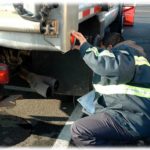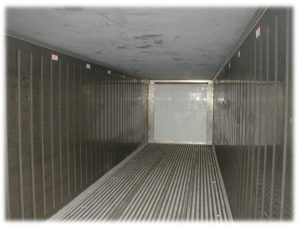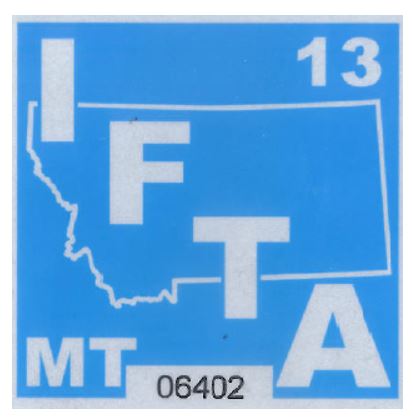During a North American Standard Level 1 or Level 5 inspection, it is possible for a driver to be out-of-service and still have the vehicle(s) “pass inspection” to qualify for a CVSA decals. This article will explore the violation criteria required in order to answer, what is an out of service order?
Authorized CVSA personnel are required to declare “out-of-service” any commercial motor vehicle whose mechanical condition or loading would cause a risk of an accident or breakdown. No motor carrier is allowed to operate or an inspector is allowed to release the truck/trailer until the required repairs have adequately been completed to the extent the violation no longer exists.
Defective Brake Violation
The number of defective brakes required for a vehicle to be declared out-of-service is based on the 20 percent rule. If 2 out of the 10 standard brakes are faulty, then the truck will be declared out-of-service.
Brake system defects are the leading cause of out-of-service violations followed by cargo securement, and tires/wheels violations as indicated in the CVSA’s annual International Roadcheck Results.
Here is a list of some of the out-of-service criteria as it relates to the brake system:
- Brake lining/pad does not move or make contact with braking surface when action is applied
- Audible air leak such as a loose chamber clamp
- A brake on any of the axles is missing
- When the brake adjustment limits are tested, the pushrod stroke is greater than the adjustment limit of the brake chamber.
- Missing or broken brake spider, lining, adjuster, shoe, anchor pin, return spring, cam roller, yoke, camshaft, pushrod, clevis pin, clevis pin retainer, parking brake power spring, or air chamber mounting bolt.
- Defective brake linings
- Loose or missing brake chamber
- Brake pad thickness less than 1.6mm
- Broken or missing steer axle brake
- Misaligned air chamber or adjuster size/length.
For full details of out-of-service criteria and reference charts as they relate to the brake system, please refer to the CVSA North American Standard Out-of-Service Criteria Handbook.
Brake fade is a common problem that can be the cause of an out of service order. Brake fade occurs when a great deal of force is applied to the brakes which causes poor brake performance. Trucks have a high GVWR and therefore require a larger amount of energy to stop and as a result, more air pressure.
Cargo Securement
Cargo securement is important to the safety of the transportation system. Here is a brief overview of some conditions that can lead to positioning a truck in an out of service order:
- Freight secured in a way where any part of the load can fall onto the roadway
- Wedges, chocks, or a cradle is not used to prevent rolling of articles of freight that are likely to roll.
- Defective tiedowns such as chains, wire rope, ratchet straps, or rope.
Coupling Devices
Any defects in the fifth wheel mounting frame’s fasteners, parent metal, and/or weld that is greater than 20 percent are grounds for a violation.
Drivers, during their pre-trip inspections, are encouraged to look for cracks in the weld, mounting plate or pivot bracket, and cracks caused by corrosion that are greater than 3.2 centimeters in width.
Fore or aft stops should not be missing and should be securely attached. An exception to this rule is if your fifth wheel is moveable and is secured with vertical pins.
As far as the drawbar is concerned, there must not be a movement between the sub-frame and drawbar at point of attachment greater than 6.4 centimeters.
Insecure latches, fasteners, and bolts that are often missing or loose are common reasons why the coupling devices section of the CVSA inspection results in violations for many truckers.
Driveshaft
Anything that has to do with the yoke ends must not be loose. Universal joint bearing cap must not be missing. The carrier bearing must not be broken. Any accompanying bracket bolts or mounting hardware must also not be broken. Furthermore, the driveshaft tube must not have a crack greater than 6.4 centimeters in length. The driveshaft tube end must not be cracked and the shaft tube itself must not have any obvious twist.
Exhaust Systems
Exhaust system should not have a leak that permits entry of the exhaust fumes into the driver’s cabin that would otherwise put the driver’s health and ability to operate the vehicle at risk. Moreover, no part of the exhaust system of any commercial truck should be located in a place that risks damaging the electrical wiring, the fuel supply, or any combustible aspect of the vehicle.
Frame
The frame side rail should not have any indications of potential collapse. The frame side rail should not have a crack directed toward the bottom flange that is greater than 38 millimeters in length.
It is generally that the bottom flange is looked at when determining if there is a possible violation in the frame members.
The body or frame of the truck or trailer should not have any contact with the tire or any assembly part of the wheel during inspection.
Fuel systems
There should be no fuel leak of any fuel system.
For more information about gaseous fuel out-of-service criteria visit
Lighting devices
There must be at least one working headlamp that works on low beam. There also must be one steady working tail lamp on the fear of the rearmost vehicle (truck or trailer) visible from 500 feet.
The rearmost vehicle must have at least one functioning stop lamp. Both turn signal lights should be working.
Steering mechanisms
There must be no free play in the steering wheel. For example, there is a clear indicator of potential free play in the steering wheel if the movement of the wheel exceeds 45 degrees before the steering axle tires more. Any cracks or loose mounting brackets in the front axle beam and all other steering components except the steering column, and the gear box can trigger a violation.
Suspensions
U-Bolts or other spring to axle clamp bolts must not be damaged, loose, or missing. Any axle must be damaged to the extent it shifts from its normal position.
No more than one-fourth of the leaves in any spring assembly must not be broken. Coil spring should not be broken. Rubber spring should not be missing. A slide suspension attachment member also called an undercarriage body rail should not be cracked along a 4-foot continuous length.
Tires
Insufficient tread on tires is likely to result in an out-of-service order. 1.6MM is the minimum tread requirement.
Trailer bodies
The upper rail must not be broken with complete separation of the flange. There are also build condition requirements for the lower rail.
Furthermore, there must not be more than two broken floor cross members.
Wheels, rims, hubs
The lock or side ring must not be damaged. There must also not be any circumferential crack in the rim. Moreover, no part of the bearing hub cap should be damaged or missing that allows an open entry into the hub assembly.
Windshield wipers
Driver side windshield wipers must be working.
What should a fleet manager do in the event one of their trucks is placed in an out-service-of order?
Depending upon what would be the most cost effective and compliant method, one could request the inspector at his discretion, to allow for the truck to be transported or escorted to a local repair shop given it is less hazardous to the public to do so. If one of the violations has to do with a fault in the power unit’s ability to tow the trailer such as with a defective coupling device, then one could consider making an arrangement for another tractor to pick up the trailer while the original truck is getting repaired.
If the violation is minor and can be fixed on site such as a loose or missing tie-down to the freight, then the manager should advise the truck operator to make the fix. Otherwise, a mechanic would be required to repair the defects on-site. Overall, the fleet manager should aim to achieve the most economical solution while ensuring that safety compliance of the tractor-trailer is in alignment with CVSA standards



